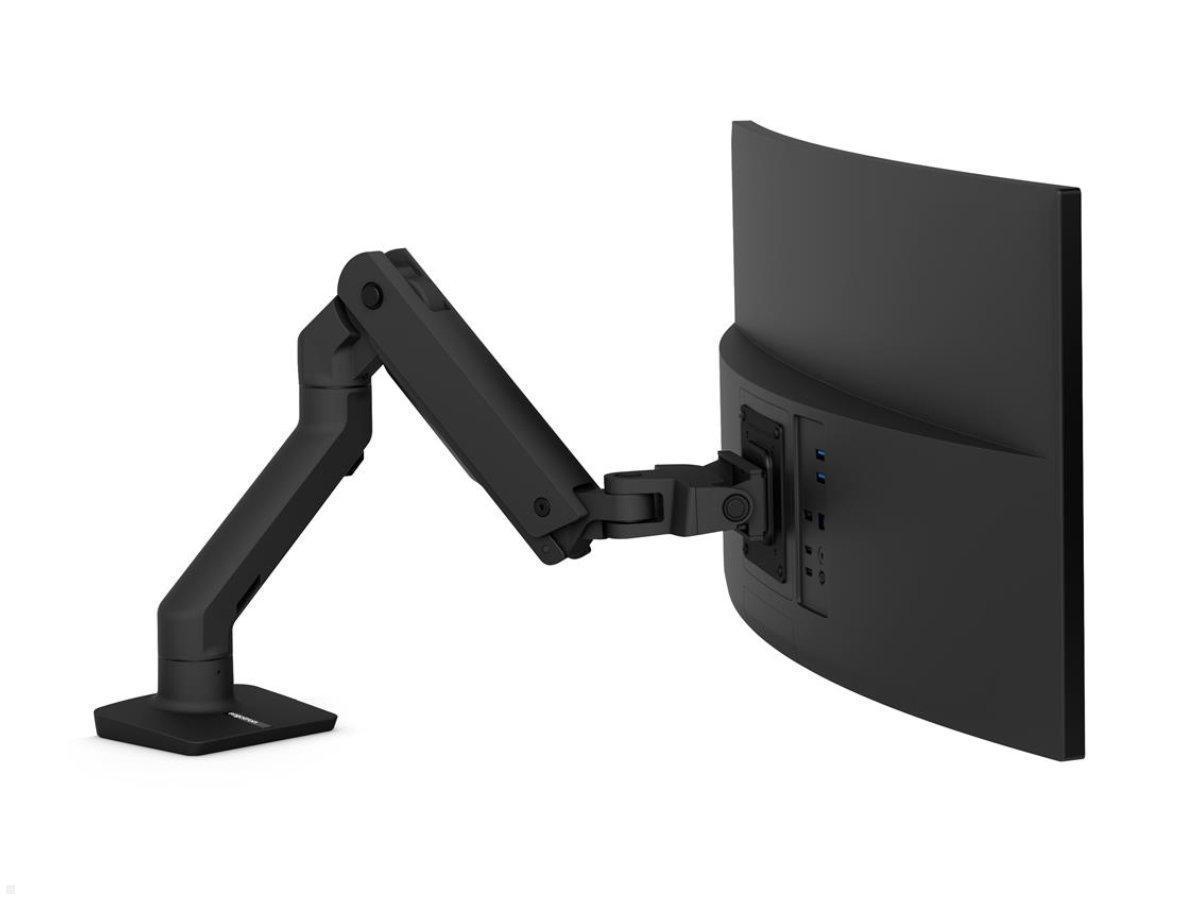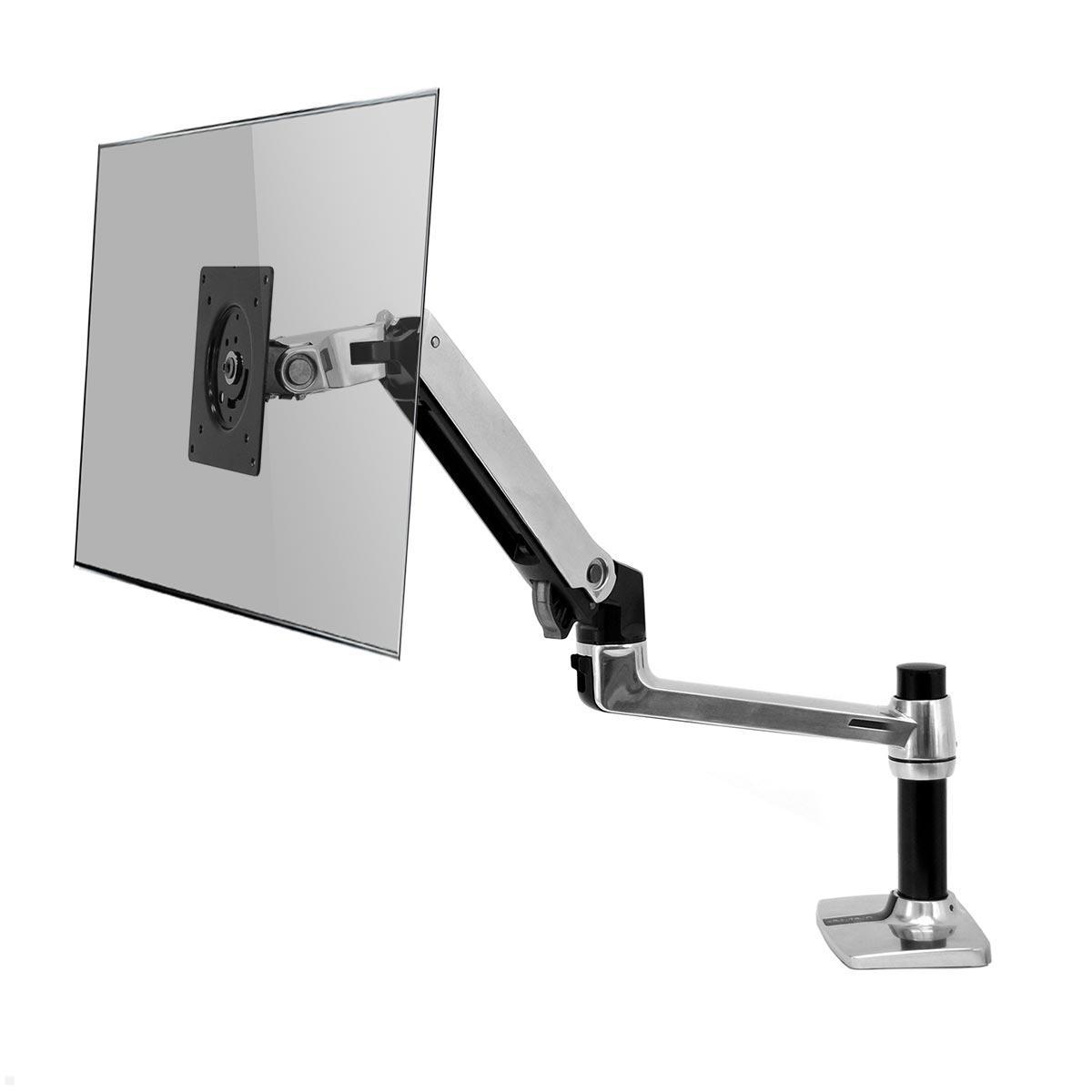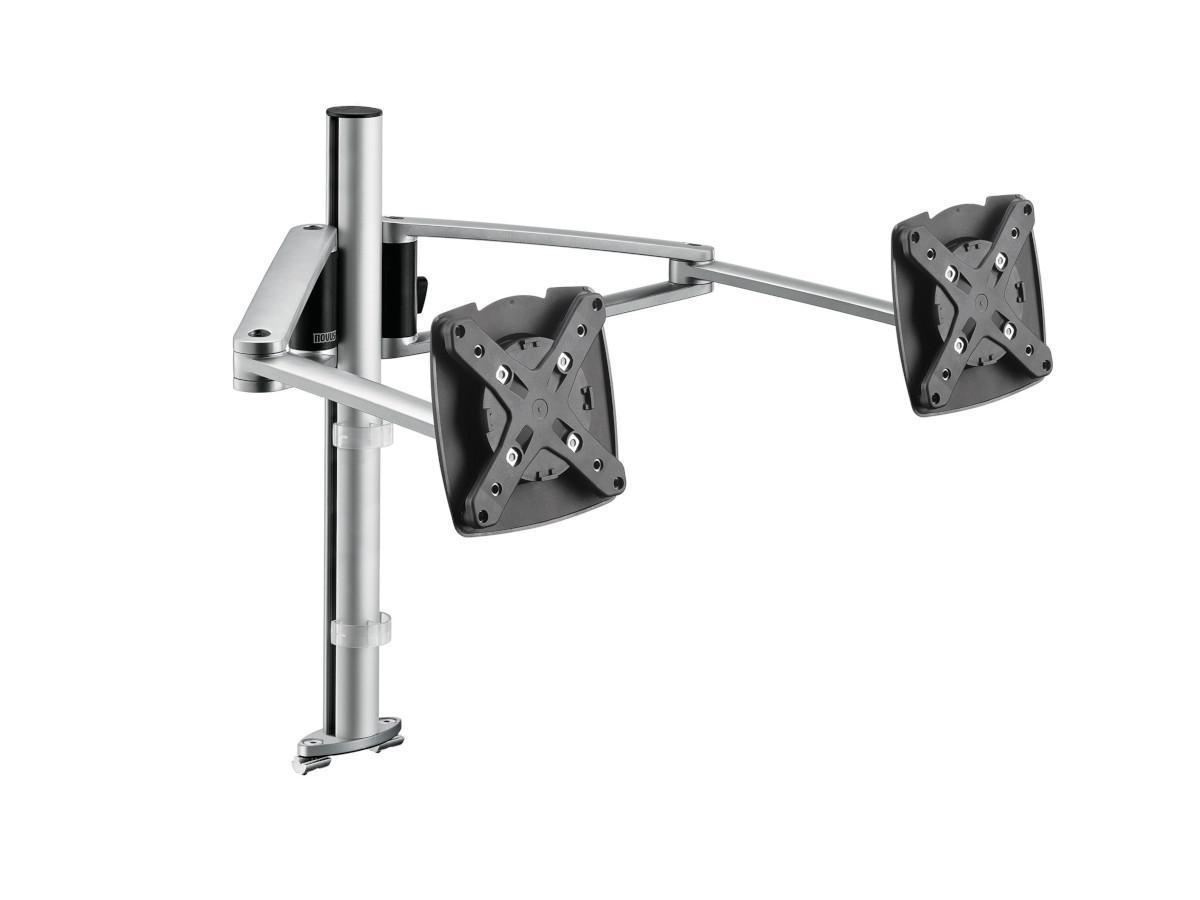Mounting Options for Monitor Mounts on Desks

Choosing the right mounting option for a monitor mount is crucial for ergonomics, stability, and space savings in the workplace. Depending on the desk type and individual requirements, there are various mounting methods. The most common mounting options are the desk clamp, the through-desk mount, the through-screw mount, the C-clamp, the stand, and the system rail. Adapter solutions are available for specific desks of certain brands.
Some monitor mounts are shipped from the factory with two different mounting options – for example, a desk clamp and a through-desk mount included. This allows users to flexibly decide which mounting method is best suited depending on the workstation and desk type. These combined solutions increase the adaptability and reusability of the mount, especially when changing workstations or redesigning them.
Here, we introduce you to the individual mounting options, their functionality, and their advantages and disadvantages.

Desk clamp
The desk clamp is one of the most popular mounting methods because it can be installed without tools or with minimal effort. The mount is clamped to the edge of the table with a screw clamp.
-
Advantages of the desk clamp
- Easy to install without drilling or permanent changes to the table
- Can be moved flexibly if the workstation is redesigned
- Suitable for many types of desks as long as a suitable table edge is available
-
Disadvantages of the desk clamp
- Not compatible with desks without stable edges or with very thick table tops
- Can leave pressure marks on sensitive table surfaces
- Stability can be limited with very heavy monitors
-> Shop now: Monitor mounts with clamp

C-Clamp
The C-clamp is a variation of the classic desk clamp, but differs in its more compact design and increased stability. It is attached to the edge of the desk, with the upper part of the clamp resting on the desk surface and the lower part secured with a screw or clamping mechanism. This mounting method allows for secure installation without permanently modifying the desk.
-
Advantages of the C-Clamp
- Quick and easy installation without drilling
- Compact design – ideal for limited space
- High stability, even suitable for larger or heavier monitors
- Reusable and flexible
-
Disadvantages of the C-Clamp
- Requires a suitable table edge with sufficient stability
- Protective pads are required for sensitive surfaces
- Limited compatibility with very thick or frameless tabletops
You can learn more about C-clamps in a separate article about this mounting option.
-> Shop now: Monitor mount with C-clamp

Through-table attachment
The through-table mount, also called cable hole fastening, is installed through an existing cable entry hole in the tabletop. The bracket is passed through this hole and fixed from below with a screw or nut.
- Advantages of the through-table mount
- Space-saving and tidy appearance, as no clamps are visible
- Greater stability compared to the desk clamp, as the bracket is firmly connected to the desk top
- Ideal for workstations with cable ducts, as existing holes can be used
- Disadvantages of the through-table mount
- Requires either an existing or a newly drilled hole in the desk
- Fixed location, little flexibility for later redesign
Screw-through fastening
This method is similar to the through-desk fastening, but the bracket is attached directly with a screw through the desk top. For this, a hole must be drilled in the desk, through which a stable screw connection is made.
-
Advantages through-desk fastening
- Very high stability, also suitable for heavy monitors or multiple brackets
- Secure connection that does not loosen or slip
-
Disadvantages through-desk fastening
- Permanent modification of the desk by drilling required
- Location of the bracket cannot be easily changed after installation
-> Shop now: Monitor mounts with through-desk fastening

System rail
System rails are integrated into modern office furniture or are subsequently installed. Various workplace accessories, including monitor mounts, can be flexibly attached to these rails.
-
Advantages of system rails
- Maximum flexibility, as monitors can be quickly repositioned
- No damage to the table top, as no clamps or holes are required
- Can be expanded with other mounts or accessories (e.g. document holders, lights)
-
Disadvantages of system rails
- Requires an existing or additionally installed system rail
- Can be more expensive than other types of attachment depending on the manufacturer and model
- Not always compatible with all desk types
-> Shop now: monitor mounts for system rails

Monitor Stand
The monitor stand is placed directly on the table surface and does not require any permanent installation to the table. It typically consists of a stable base plate that Supports the weight of the monitor. This solution offers maximum flexibility and is particularly useful where drilling or clamping is not possible – such as with glass or designer desks.
-
Advantages of the monitor stand
- No assembly or tools required
- Protects the desk surface
- Can be positioned flexibly, ideal for temporary workstations
- Easy to combine with cable management systems
-
Disadvantages Advantages of the monitor stand
- Requires floor space on the desk
- Less stable in the event of shocks or accidental movement
- Limited height adjustability compared to mounts
-> Shop now: monitor mounts with stand
Adapters for special desk systems (e.g., K+N or USM)
Some office furniture manufacturers, such as König+Neurath or USM Haller, use their own desk systems with special profiles, rail systems, or frame constructions. These models usually require special adapter solutions to securely attach monitor mounts.
These adapters are precisely tailored to the respective desk profiles and ensure a stable and visually clean integration of the mount without damaging the furniture or compromising its functionality. When selecting a monitor mount, compatibility should always be considered to ensure secure installation and optimal ergonomics.
Conclusion / summary
The choice of the appropriate mounting method for a monitor mount depends largely on the desk type, the spatial conditions, and individual requirements.
While desk clamps and C-clamps enable quick, flexible, and tool-free installation, through-desk and through-screw mounts offer a particularly stable and durable solution – ideal for permanently installed workstations.
System rails and adapters for special desk systems, on the other hand, are ideal for modular or design-oriented office furniture, as they offer harmonious integration and high flexibility.
For those who don't want a permanent mount, the monitor stand offers a simple, mobile alternative that doesn't interfere with the desk top.
Many modern mounts today combine several mounting types in one set, allowing the mount to be flexibly adapted to different work environments. This allows you to choose between stability, flexibility, and design as needed – for an ergonomic yet functional workplace design.
Related products
Average rating of 5 out of 5 stars
Average rating of 5 out of 5 stars
Average rating of 5 out of 5 stars
Average rating of 5 out of 5 stars
Average rating of 0 out of 5 stars




















